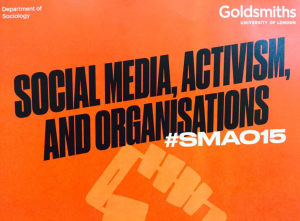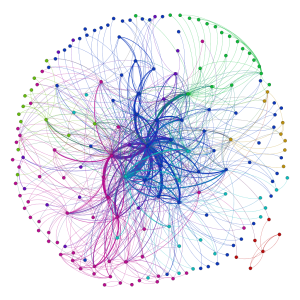The Facebook Psychology ‘experiment’ which manipulated the emotional content of nearly 700,000 users provides evidence that corporations need to have review procedures in terms of ethics that universities of been developing for some years surrounding social media research. In a university context, Institutional Review Boards (IRBs) are responsible for monitoring the ethics of any research conducted at the University. The US government’s Department of Health and Human Services publishes very detailed guidance for human subjects research. Section 2(a) of their IRB guidelines states that “for the IRB to approve research […] criteria include, among other things […] risks, potential benefits, informed consent, and safeguards for human subjects”. Most IRB’s take this mission quite seriously and err on the side of caution as people’s welfare is at stake.
The reason for this is simply to protect human subjects. Indeed, part of IRB reviews also evaluate whether particularly vulnerable populations (e.g. minors, people with mental/physical disabilities, women who are pregnant, and various other groups depending on context) are not additionally harmed due to research conducted. Animal research protocols follow similar logics. Before University researchers conduct social research, the ethical implications of the research are broadly evaluated within ethics and other criteria. If any human subject is participating in a social experiment or any social research, most studies either require signed informed consent or a similar protocol which informs participants of any risks associated with the research and allows them the option to opt out if they do not agree with the risks or any other parameters of the research.
Therefore, I was tremendously saddened to read the Proceedings of the National Academy of Sciences (PNAS) paper co-authored by Facebook data scientist Adam D. I. Kramer, Jamie E. Guillory of University of California, San Francisco and Jeffrey T. Hancock of Cornell University titled ‘Experimental evidence of massive-scale emotional contagion through social networks’. The authors of this study argue that agreement to Facebook’s ‘Data Use Policy’ constitutes informed consent (p. 8789). The paper uses a Big Data (or in their words ‘massive’) perspective to evaluate emotional behavior on Facebook (of 689,003 users). Specifically, the authors designed an experiment with a control and experimental group in which they manipulated the emotional sentiment of content in a selection of Facebook users’ feeds to omit positive and negative text content. Their conclusion was that the presence of positive emotion in feed content encouraged the user to post more positive emotional content. They also found that the presence of negative emotion in feed content encouraged the production of negative content (hence the disease metaphor of contagion). In my opinion, any potential scientific value of these findings (despite how valuable they may be) is outweighed by gross ethical negligence.
This experiment should have never gone ahead. Why? Because manipulating people’s emotional behavior ALWAYS involves risks. Or as Walden succinctly put it ‘Facebook intentionally made thousands upon thousands of people sad.’
In some cases, emotional interventions may be thought to be justifiable by participants. But, it is potential research subjects who should (via informed consent) make that decision. Without informed consent, a researcher is playing God. And the consequences are steep. In the case of the Facebook experiment, hundreds of thousands of users were subjected to negative content in their feeds. We do not know if suicidal users were part of the experimental group or individuals with severe depression, eating disorders, or conditions of self-harm. We will never know what harm this experiment did (which could have even lead to a spectrum of harm from low-level malaise to suicide). Some users had a higher percentage of positive/negative content omitted (between 10%-90% according to Kramer and his authors. Importantly, some users had up to 90% of positive content stripped out of their feeds, which is significant. And users stripped of negative content can argue social engineering.
To conduct a psychological experiment that is properly scientific, ethics needs to be central. And this is truly not the case here. Facebook and its academic co-authors have conducted bad science and give the field of data science a bad name. PNAS is a respected journal and anyone submitting should have complied with accepted ethical guidelines regardless of the fact that Facebook is not an academic institution. Additionally, two of the authors are at academic institutions and, as such, have professional ethical standards to adhere to. In the case of the lead author from Facebook, the company’s Data Use Policy has been used as a shockingly poor proxy for a full human subjects review with informed consent. What is particularly upsetting is that this was an experiment that probably did real harm. Some have argued that at least Facebook published their experiment while other companies are ultra-secretive. Rather than praising Facebook for this, such experiments cast light on the major ethical issues behind corporate research of our online data and our need to bring these debates into the public sphere.

